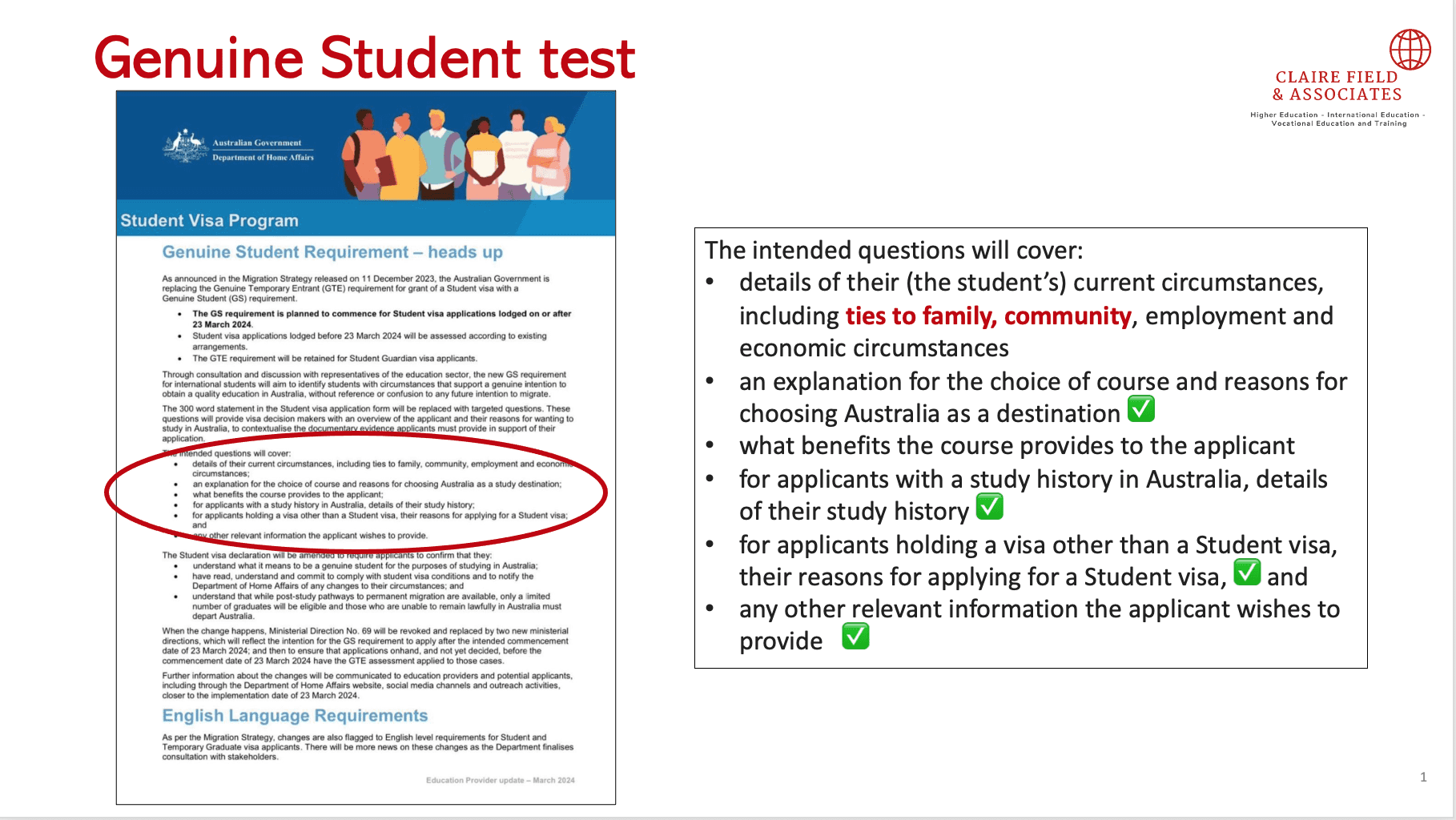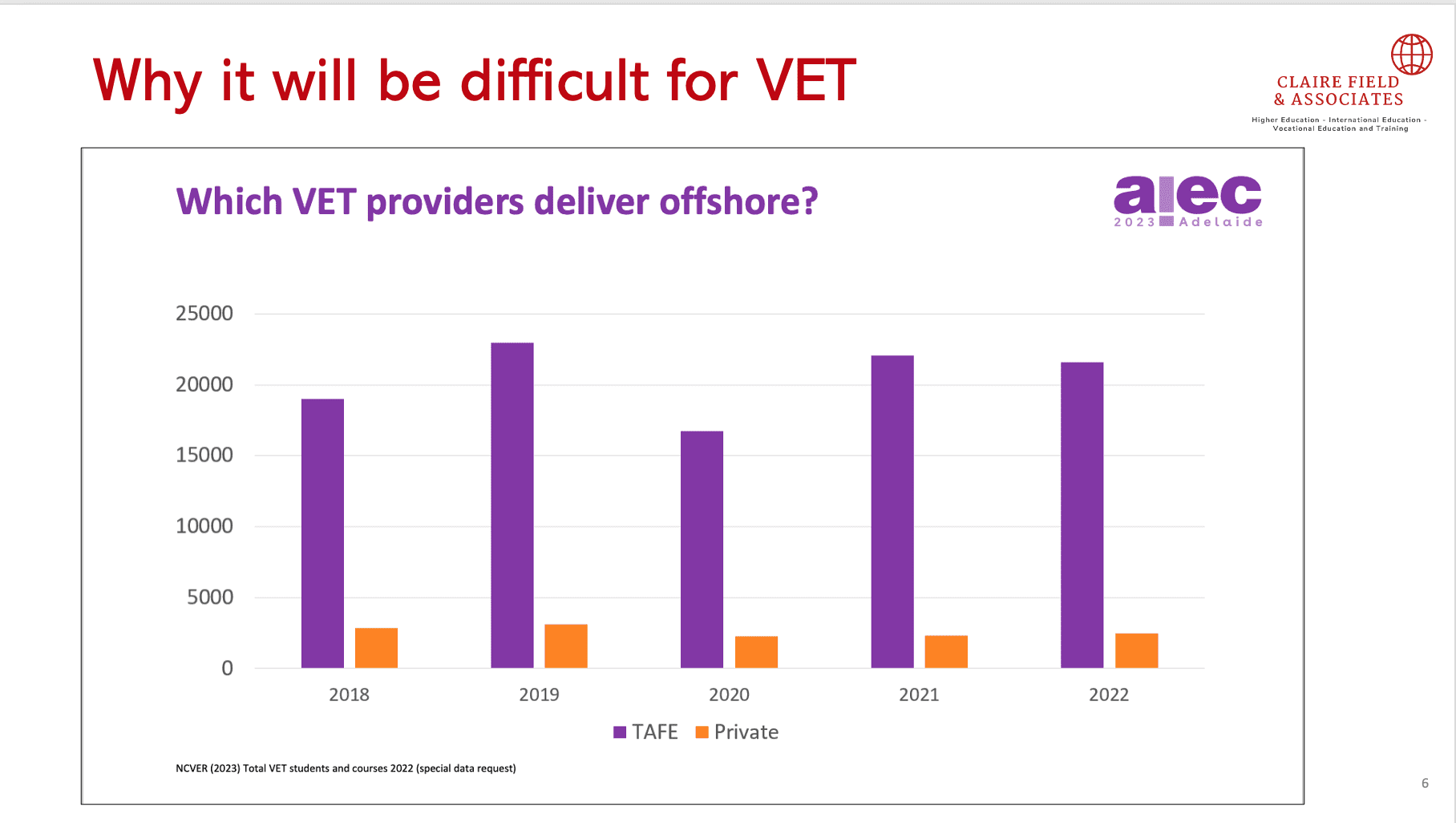
Presentation: “Where is international education heading?” Melbourne CSHE forum
Claire joined a panel at the University of Melbourne’s Centre for the Study of Higher Education to discuss the future of international education.
Here are her slides from her presentation and some of the key points she focussed on:

Education Providers have received advice from the Department of Home Affairs on the type of detail which students will be asked to provide when the new Genuine Student test applies from 23 March. Based on these details I have concerns about one element of the test – a student’s ties to their families.
Undoubtedly immigration officials believe that students with weak family ties may be more likely to want to come to Australia to work and potentially not return home. In fact – the argument can well be made that students who stay on in Australia after their initial student visa or post-study work visa expires and do so by enrolling in cheaper VET courses so they can continue to work – are typically motivated to do so by their desire to send monies home to their families (ie their strong family relationships drive their desire to work so that they can help provide for their families). The focus on family ties also ignores the government’s stated intention to make it easier for some students to become permanent residents.
If implemented properly – the other elements of the Genuine Student test (as presented to providers) have merit – even though they will cause enormous disruption to some good providers.

This slide and the two that follow contain extracts from the government’s Migration Strategy.
I have selected them to remind the audience (and perhaps some officials involved in the recent swathe of unexplained visa refusals) what the government’s stated intention with the changes is.


The next slide summarises what the sector should be able to expect from the Genuine Student test, if properly implemented.
I know it will cause a great deal of concern that I have given a tick ✅ to the changes as they will impact VET providers – but if we focus on the student – we should be asking if the money they spend coming to Australia will deliver them a career benefit in the future (and not just leave some students continually switching to new student visas and courses so they can keep working in Australia – because their original course didn’t deliver them a good job at the end of it)

The next two slides explain why it will be difficult for VET providers under the new Genuine Student test regime – they are from a presentation I gave at the 2023 AIEC conference. I was focussed on the amount (or relative lack of ) delivery of full AQF qualifications by Australian VET providers in Southeast Asia over the last five years.
The numbers speak for themselves and they highlight the fact that currently Australian VET qualifications cost a lot (even when delivered in-country) relative to the cost of local VET qualifications – and they do not deliver significant benefits to students in their future careers which warrant the investment in an Australian qualification.
The economic equation for international students from Southeast Asia who come to Australia to live while they study a VET qualification is even more costly.


The number of VET providers who will be impacted by this change is significant, as I wrote about when the Migration Strategy was first released.

And so what does the sector look like once the new test is implemented (and if it is implemented in line with the stated intentions in the Migration Strategy)?

And, as a former regulator, these are the risks I foresee as a consequence of the changes.





